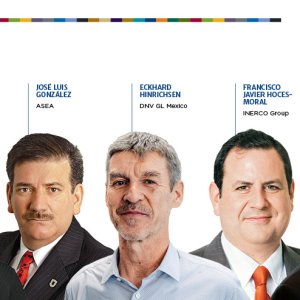
New Technology for Space Exploration
During his closing presentation at Mexico Aerospace Forum 2017 in Mexico City on Wednesday, Rodolfo Neri Vela, the first and only Mexican astronaut, presented his views on the current situation of the Mexican aerospace industry.
Thirty-two years after Neri went into space, the astronaut pointed out how “this trip had a strong impact across various sectors in Mexico, particularly in the education segment.” But he lamented the current situation of space research and exploration in Mexico. “Because of different circumstances in our political life, Mexico did not follow up on the success it achieved 32 years ago,” he said. “Several countries have reached and overtaken us in terms of experiments in microgravity, space trips and presence at the International Space Station.”
The solution, he said, is to assign a greater budget to the Mexican Space Agency (AEM) and reform the Law of the Mexican Space Agency to turn it into an autonomous public organization. “It is necessary that the federal government gives due importance and the necessary funds to the Mexican Space Agency,” he said. Neri also underlined that once AEM receives these funds and liberties, it must be transparent about its performance because there is little knowledge about any concrete or tangible project conducted by the agency.
Neri said that although it would be absurd to compare Mexico with the US, when comparing to Spain, Argentina, Brazil or other countries similar to Mexico, there is a huge difference in terms of funds allocated for space programs. He explained that all these countries earmark some US$100 million yearly while Mexico only provides US$6 million. “A country that does not take care of higher education and innovation is destined to depend on technological transference and suffer constant currency devaluation,” he said.
Since Mexico is one of the 15 largest economies in the world, there is no reason to lag behind in space technology, Neri added. “There is a lot of talk about Mexico having a strong aerospace industry,” he said. “But in Mexico there is no aerospace industry in itself because no space projects are carried out.” He said it is time that Mexico takes the leap from a purely aeronautical industry to also work in space components.
While presenting his views on the current developments of space technology, Neri said that “in Mexico the bridge between the space agency and industry is nonexistent.” He proposed that Mexico start thinking of larger projects wherein AEM provides seed money for the industry to come up with innovations and that a certain percentage of Mexican-manufactured components be included in the country’s next generation of satellites. “I would love to see an autonomous space agency with its own researchers in several cities, including Guadalajara and Monterrey, and working closely on projects with NASA, ESA and other agencies,” he said.
Neri also pointed out the lack of female participation in space programs. Of the 600 people that have been to space, he said only 10 percent have been women. “May the next Mexican astronaut be a woman,” he said. “Or at least, may both a man and a woman be sent to space next time on behalf of Mexico.”














